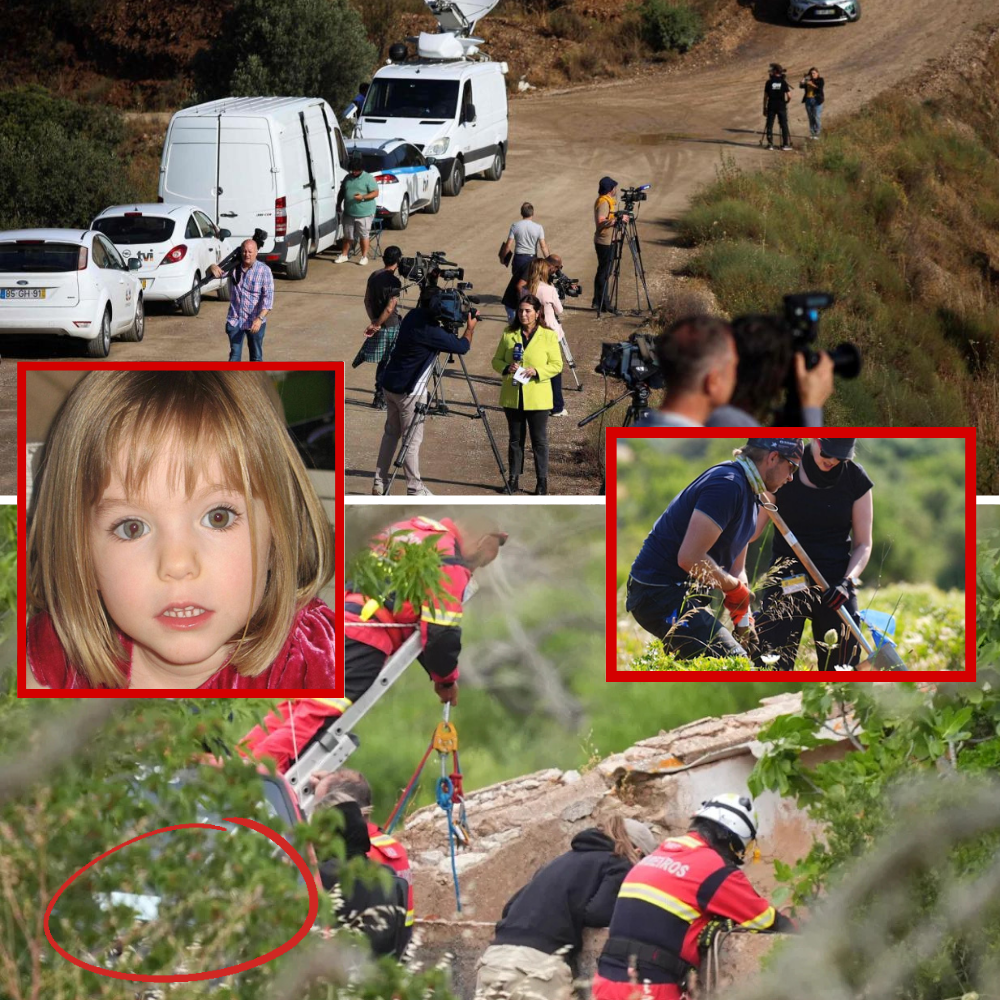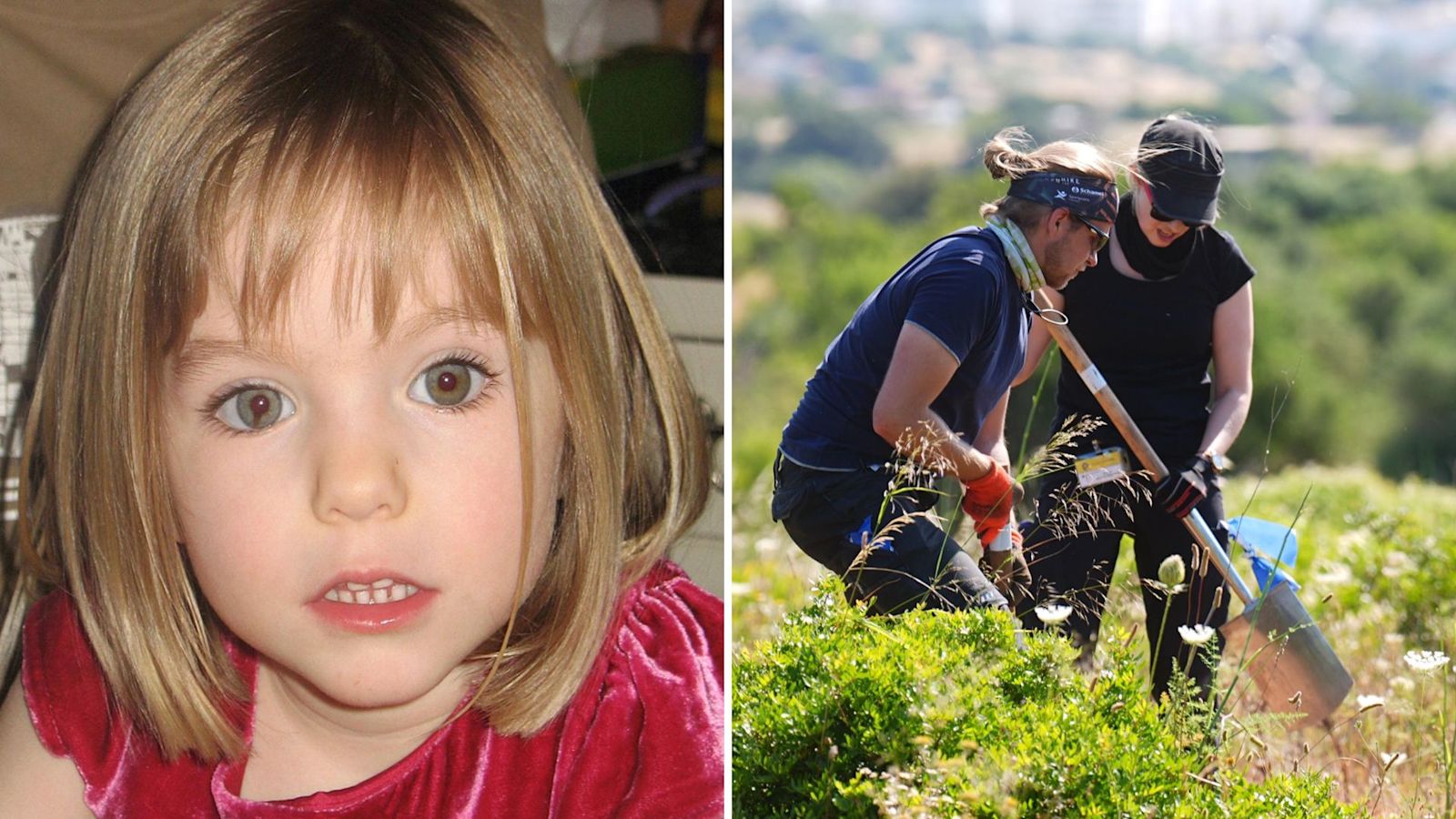
The disappearance of Madeleine McCann, the British child who vanished from a holiday apartment in Praia da Luz, Portugal, in May 2007, has remained one of the world’s most haunting unsolved cases. Over the years, countless theories, suspects, and investigations have swirled around the case, keeping it firmly in the public consciousness. Now, more than a decade and a half later, a fresh and highly dramatic development has reignited speculation — and stirred hopes and fears in equal measure.
An Unusual Search in a Remote Area
This week, investigators were seen combing through thick vegetation in a remote rural area near an abandoned building. Armed with tools including pickaxes, shovels, and even a chainsaw, the search team methodically cleared dense overgrowth, creating space to dig close to the derelict structure. Observers reported that the team appeared to be working with a clear and determined purpose, suggesting that they were following a specific lead rather than conducting a random sweep.
In parallel, firefighters were deployed to pump water out of an old well on the property. The well, partially obscured by overgrown plants and fallen debris, appeared to be a focal point of the operation. Such measures hinted at the possibility of finding physical evidence long hidden from view.
The Mysterious White Object
The search took a dramatic turn when authorities uncovered what witnesses described as a “white object” buried beneath the soil. Almost immediately after its discovery, the item was swiftly removed from the scene and shielded from cameras. This quick, deliberate action only fueled public curiosity and speculation. Was it an object of forensic significance? A personal belonging? Or something more sinister?
Authorities have not disclosed details about the nature of the item, and official channels remain tight-lipped. This secrecy has left media outlets and online communities buzzing with theories — ranging from the possibility of personal artifacts belonging to Madeleine to something entirely unrelated to the case.
The Weight of History
The renewed search effort is not taking place in a vacuum. For years, the case has been linked to multiple countries, various persons of interest, and countless alleged sightings. In 2020, German authorities named Christian Brückner, a convicted sex offender, as a prime suspect, citing phone records and circumstantial evidence tying him to the area around the time of Madeleine’s disappearance. Despite that announcement, no definitive breakthrough has been made.
For families of missing children, every development brings an intense emotional mix: a spark of hope that long-awaited answers may finally emerge, but also the dread that those answers could confirm the worst.
Why This Search Matters
The current operation’s location — near an abandoned rural building — raises questions. Such secluded sites often remain untouched for years, allowing potential evidence to lie undisturbed. Investigators’ use of specialized tools, from chainsaws to water pumps, suggests they are prepared for complex retrieval operations, whether digging through compacted soil or recovering items from deep, waterlogged spaces.

The decision to drain the well in particular is significant. Wells can serve as hidden dumping sites and may preserve objects in a way that open ground cannot. If anything of evidentiary value was placed there, it could potentially still hold critical forensic clues — even after many years.
The Human Side of the Investigation
While the physical search commands the most visible attention, the emotional toll on those involved cannot be overlooked. For the McCann family, who have endured false leads, relentless media scrutiny, and the agony of uncertainty for over 16 years, each new development is a delicate balance between hope and heartbreak.
For investigators, the challenge lies not only in unearthing physical evidence but also in carefully preserving its integrity for any future legal proceedings. The speed with which the white object was whisked away from cameras suggests a high degree of sensitivity — both in terms of media management and investigative necessity.
Public Reaction and Speculation
Social media erupted within hours of the reports surfacing. Hashtags related to the case trended globally as amateur sleuths dissected every image, video snippet, and description. Many speculated that the secrecy around the object’s removal indicated its potential importance. Others cautioned against premature conclusions, noting that investigators are often required to remove and secure even mundane objects to rule them out.
Conspiracy theories — long a shadow companion to this case — have inevitably gained new traction. Some online commentators have suggested that the renewed search could be linked to previously undisclosed witness testimony. Others believe it may be tied to forensic re-examinations of existing evidence.
Lessons From the Past
The Madeleine McCann case has been a lesson in how quickly information — and misinformation — can spread. Early missteps in the original investigation, combined with intense tabloid coverage, set the stage for years of conflicting narratives. The renewed search offers an opportunity for authorities to demonstrate transparency while also safeguarding the investigation’s integrity.
Forensic experts emphasize that cases of this age are challenging but not impossible to solve. Advances in DNA analysis, digital forensics, and crime scene recovery techniques mean that even small items, if preserved, can yield substantial breakthroughs.
What Happens Next
Authorities are expected to analyze the recovered white object in controlled forensic environments. This process could take days, weeks, or even months, depending on its condition and complexity. If it proves to be significant, the discovery could reshape the trajectory of one of the most high-profile missing persons cases in history.
Until then, the world waits — watching a rural patch of land in Portugal, where an old well and an abandoned building may hold answers that have eluded everyone for far too long.

